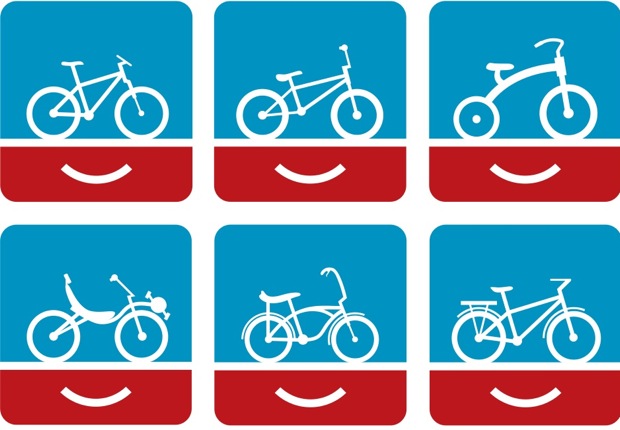Great news: a recent court ruling in California paves the way for significant new freedom, strikes a blow for equality, and heralds a new era of hope and joy.
I refer, of course, to a Superior Court judge lifting an injunction against creating bike lanes and related bike-friendly infrastructure in San Francisco. Bike lanes make a huge difference for the safety, comfort, and appeal of bike riding in urban areas, and go a long way towards changing a culture towards more carbon-and-human friendly transportation options.
All of which is an excuse to bring up what I really want to talk about: bikes. My current commute bike is an early-80’s vintage Specialized Rockhopper that I got at a garage sale in Lee Vining. Advantages? It’s pink, small, old, and falling apart, which means no one wants to steal it. Disadvantages: it’s pink, small, old, and falling apart. Time for an upgrade. But … the choices! The question is begged: What’s the best urban bicicletta?
For my money, and for urban riding, an upright seating position is best. You want a clear view of forward threats, and besides, it’s more comfortable. A handlebar configuration that leaves your hands on the brake levers is also key — what with car doors and sudden lefts, quick stops are important. For these reasons, I find the drop handlebars found on typical road bikes to be suboptimal. At the same time, the wideness of a typical flat bar found on mountain bikes can be a liability when squeezing past a line of cars at a light.
Tires are also important. Slicks give you less rolling resistance, and feel better in turns. Similarly, size matters too. Urban roads have their bumps, and volume in your tires makes for a more pleasant experience for your tush.
Outfitting a used bike is clearly the best environmental option. Put some slicks on your mountain bike, or retrofit a garage-sale ten-speed with moustache handlebars. But if you are mechanically challenged, or just want the ease, durability, and chic of starting with something new, bike manufacturers are increasingly designing to serve the commute market. Major manufacturers like Trek and Kona have their urban collections. And there is a whole new breed of niche start-ups that bring a lot to the table.
My friend Deb has been eyeing Bowery Lane Bikes. Certainly, they have a utilitarian chic, tempered with hipster cred — the box on the back can carry two sixers of beer (PBR, natch). And the steel comes from a solar powered factory — that scores additional points with me anyway.
Public Bikes just opened around the corner from our office. These come with optional Shimano Nexus internal hubs — a no-fuss option that preserves the simplicity of single-speeds with 8-geared practicality that comes in handy in a hilly place like San Francisco. It may just be the perfect urban vehicle.
There is a direct correlation between having a bike that you like to ride and, well, actually riding it. Get on it. Pun intended.




